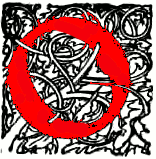In transcribing the following paragraphs from the Internet Archive online version of The Imperial Gazetteer’s entry on Egypt I have divided the long entry into separate documents, expanded abbreviations for easier reading, and added paragraphing and links to material in the Victorian Web. Unless otherwise noted, charts and illustrations come from the original Gazetteer. — George P. Landow

ld Cairo[Musr-el-Ateekeh], called Fostat by the Arabs, is the S. or upper port of Cairo, where all duties on goods destined for the latter are levied and paid. It presents some objects of interest, including an old Roman fortress, and the splendid mosque of Amer. The inhabitants are mostly Copts, and here are several convents of that sect of Oriental Christians. Seven antique corn stores, popularly called the granaries of Joseph, have lately been demolished. The aqueduct which conducts the waters of the Nile to the citadel of Cairo, by a winding course of 2 miles, here commences. In the Isle of Roda, opposite Old Cairo, is the famed Mckkeeás or ancient Nilometer, for measuring the rise of the Nile, upon which the fertility of Egypt depends. Uoulac, already referred to, is the lower port of Cairo.
The site of the city of Cairo is said to be that of the Babylon of Cambyses, built on the ruined site of the pre-existing Lntopolis of the Egyptians. The present city was founded by the Arabs, about A.D. 970; and its citadel, as we have seen, was raised by Sultan Saladin, in 1176. From that period till the year 1517, when it was taken by the Turks, it was the capital of the Saracenic Sultans of Egypt. The former governed it by Pashas, these being latterly controlled by the Mamalukes, to whose massacre, followed by the resumption of rule by the Pasha, we have already adverted. Pop. of Cairo and its suburbs, about 300,000; of which 190,000 are Egyptians, 10,000 Copts, 4000 Jews, 5000 Syrians, 5000 Greeks, 2000 Armenians, and a varying number of Franks or Europeans.
(Quetin, Guide en Orient; Russegger, Reise in Egypten; Wilkinson’s Modern Egypt; &c.)
Bibliography
Blackie, Walker Grahamiles The Imperial Gazetteer: A General Dictionary of Geography, Physical, Political, Statistical and Descriptive. 4 vols. London: Blackie & Son, 1856. Internet Archive. Inline version of a copy in the University of California Library. Web. 31 July 2020.
Last modified 1 August 2020